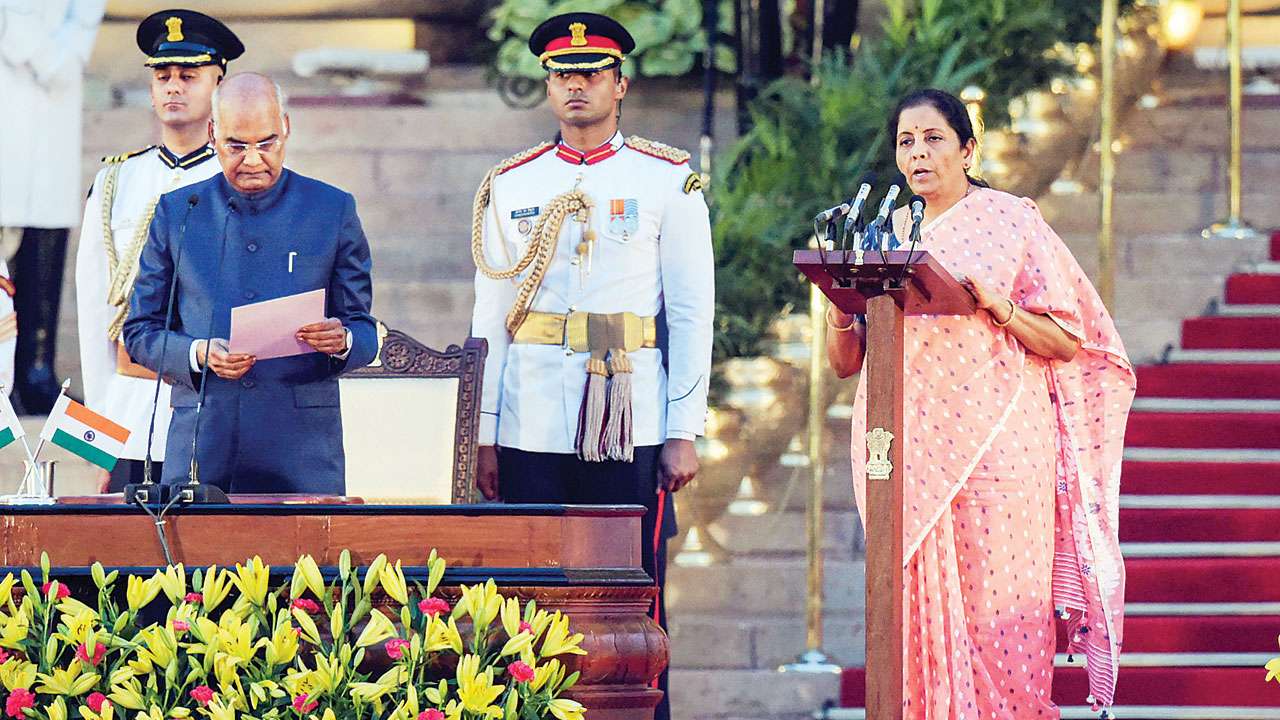
With the National Democratic Alliance (NDA) romping home easily for another five-year tenure, the first test is barely a few weeks away.
Having steered choppy economic waters during its first term, the none-too-rosy state of the economy was seldom a binding constraint since security issues in the aftermath of Pulmawa, trumped bread-and-butter issues, including agrarian distress and lack of employment.
The scattered opposition parties failed to galvanise themselves on any major economic issue, other than beating about the bush on the alleged corruption in the purchase of advanced aircraft, Rafale.
Now that Prime Minister Narendra Modi has proved beyond a pale of doubt that he is a past-master in outmanoeuvring opponents at their own game, he will now have to devote time and energy in reviving the domestic economy and stoking demand so that the core sectors get kick-started to realise their optimal potential. No sooner has the new Finance Minister Nirmala Sitharaman assumed office, problems have come knocking at her door.
With the Central Statistics Office’s (CSO) revealing that the economy lost further momentum to grow just by 5.8 per cent in the fourth quarter (Jan-Mar), the country’s gross domestic product (GDP) growth for fiscal 2018-19 at 6.8 per cent has understandably undershot even sanguine forecasts.
To boot, the unaudited/interim accounts of the central government for 2018-19, also released alongside, presented the obverse and adverse side of the economic slowdown.
Thus, the Centre compassed Rs 16,66,055 crore (91.40 per cent of corresponding revised estimate 2018-19 of total receipts) during 2018-19, comprising Rs 13,16,951 crore as tax revenue (net to Centre), Rs 2,46,219 crore of non-tax revenue and Rs 1,02,885 crore as non-debt capital receipts, which consists recovery of loans (Rs 17,840 crore) and disinvestment of public sector undertakings at Rs 85,045 crore.
Against the receipts, the total expenditure incurred by the Centre was Rs 23,11,422 crore (94.07 per cent of the corresponding revised estimate of 2018-19) out of which Rs 20,08,463 crore was on revenue account and Rs 3,02,959 crore on capital account.
What is particularly noteworthy is that out of the total revenue expenditure, as much as Rs 5,82,675 crore was on account of interest payments of past debt and Rs 1,97,066 crore on major subsidies.
In a nutshell, the gap between revenue and expenditure is not only widening, but also the quality of expenditure, particularly capital expenditure available, is too tiny to make a discernible dent on development.
Interestingly, even as the interim estimates were lower than the Budgeted estimates — euphemistically described as revised estimates — the interim Budget (2019-20) presented by the NDA government on February 1, before the poll bugle was sounded, assumed a leap of faith increase in total receipts for the current fiscal that began on April 1.
Now that the BJP government is back in the saddle and is to present a full-fledged Budget on July 5, the new finance minister must find ways and means to raise resources to match the pre-poll estimated surge in receipts.
This is especially daunting when the economy has lost the mojo to fire on all cylinders, what with both agriculture and manufacturing performing poorly.
Many reputed economists had argued that both tight monetary and fiscal policies fashioned simultaneously by the NDA authorities, when they had to institute inflation-targeting goal for the apex bank and also clean up the banking system that was stymied by whopping non-performing loans (assets), led to a growth slowdown in the recent past.
No doubt, there is merit in clearing the backlog so that the financial system can operate on a clean slate, but the need to keep the banks recapitalised so that they can resume their lending activities to productive segments at affordable rates of interest, should not be lost sight of.
The government could not infuse adequate capital to re-energise the banks from undertaking their core dharma, though it ostentatiously put in place a recapitalisation plan in phases.
As the Modi-1 government was preoccupied with economic experiments like demonetisation that kept the banking system busy, financial institutions parked their funds with the apex bank rather than lend, lest they should get compelled to handle potential problems of loan defaults over and above what they are already exposed to!
Simultaneous pursuit of austerity when growth slowdown is visible and financial stress escalating has proved to be a lethal cocktail.
As the private sector is proverbially slow to initiate steps on its own in the absence of affordable capital, it is time that the authorities disabuse themselves of the notion that more funds to lubricate the engines of the economy should flow from the coffers of the government only.
A modest cut in the cash reserve ratio (CRR) will help banks to augment their credit flow to industry and the non-banking finance companies (NBFCs), which are in dire straits today for want of wherewithal to help small industries and housing sectors to find alternative finance.
Much is expected of the finance minister to revive growth sentiments in the economy, push up public expenditure in both physical and social infrastructure and help find finances for private investment to restart with dynamism.
As prudence is a virtue mostly attributed to women than men, one may hope Nirmala Sitharaman will balance growth and inflation without the associated trauma of trade-off in her maiden Budget.
The author is a senior economic journalist based in New Delhi